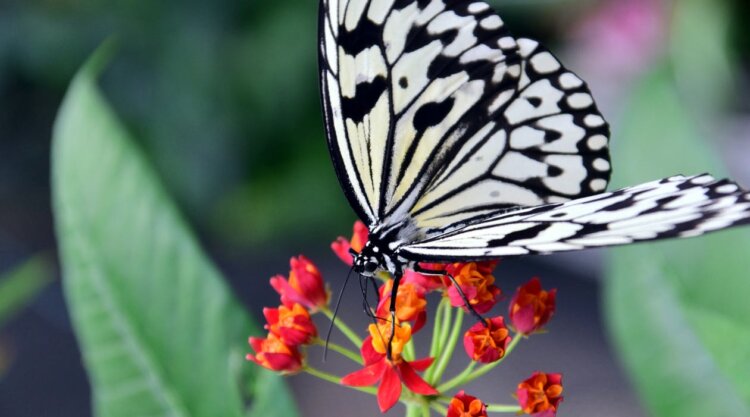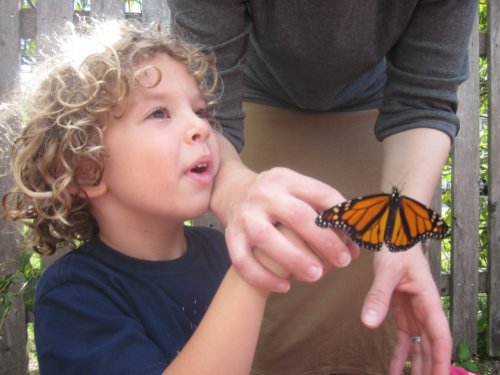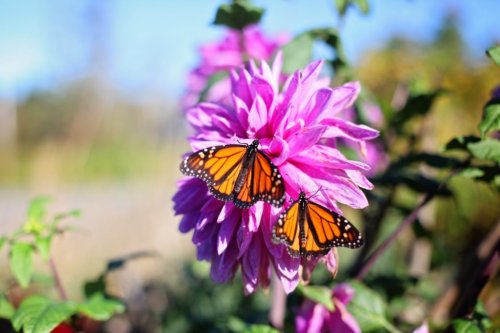
One day when my son was in kindergarten, he came home asking if we could turn all the flowers in our small garden into milkweed. In his exuberant way, my son eagerly explained that milkweed is a plant essential for monarchs—not only as their sole source of food, but as a place to lay their eggs. My son’s class had been studying both the lifecycle of a butterfly and the migration patterns of the monarch, and it clearly had stuck with him. And oh, did my son find magic in butterflies.
It’s easy to see why they captivated him . There’s certainly something beautiful and mystical about butterflies—how their life cycle encompasses multiple metaphors for growth and change. Butterflies play an essential part in the cycle of many plants, including ones that we depend on for food. Add to that the plight of certain butterflies who are losing their habitats due to climate change while others have become extinct, it’s understandable to see why many are doing their best to keep these beautiful creatures around.

I was more than happy to make my son’s butterfly vision come true, especially if all it took was a little milkweed. Together, with seeds from his school, we planted our very own little butterfly garden. And, with just a few tips and tricks, you can create one of your own.
Choose Your Plants
Different butterflies are attracted to and rely on different plants. For instance, if you want to help the monarchs then you certainly need to include some towering milkweed! However, one of the best parts of growing a butterfly garden is including a variety of colorful flowers that will look gorgeous, while helping our fluttering friends.

The goal of a butterfly garden is not only to feed current butterflies, but to provide a home for future generations. So choose plants that provide nutrition and the proper environment for butterflies to lay their eggs. Many garden stores label plants as “butterfly friendly,” and while most of these are great for providing nectar, they may not be the best for encouraging reproduction. Do a little bit of research into what plants not only grow best in your region (find what planting zone you live in here!) but also provide multiple benefits for butterflies.
The Xerces Society for Invertebrate Conservation, a nonprofit that protects wildlife like butterflies, has a list of various pollinator plants categorized by region. Click on your area and you’ll see the types of flowers and plants that work best for butterflies where you live. For instance, if you’re in Florida, Scarlett Sage is an excellent low-water plant that will attract a number of various butterflies, while the purple Prairie Blazingstar is your best bet for helping butterflies in the Great Lakes area.
If you grow a variety of plants, you attract different types of butterflies. A mix of plants with overlapping bloom periods will ensure there is always enough to eat!
Choose Your Garden Space
Most pollinating plants love sun, so find a sunny spot. Position plants as close to each other as possible, within a couple of feet of each other. When you clump flowers by species, they will attract more butterflies than if you scatter individual plants throughout.
Also provide shade with a couple of shrubs or low trees close to your garden. And put little butterfly baths — brightly colored bowls filled with water — if there is no standing water close to the garden.
Avoid using pesticides or any other chemical laden gardening spray. They will seep into the plants and can be very harmful to the butterflies.
As your flowers bloom and host local butterflies, you’ll enjoy so many bursts of color. Not only will your garden be gorgeous, but you’ll have done your part to help ensure that butterflies — and their habitats — continue to thrive.



Grok Nation Comment Policy
We welcome thoughtful, grokky comments—keep your negativity and spam to yourself. Please read our Comment Policy before commenting.